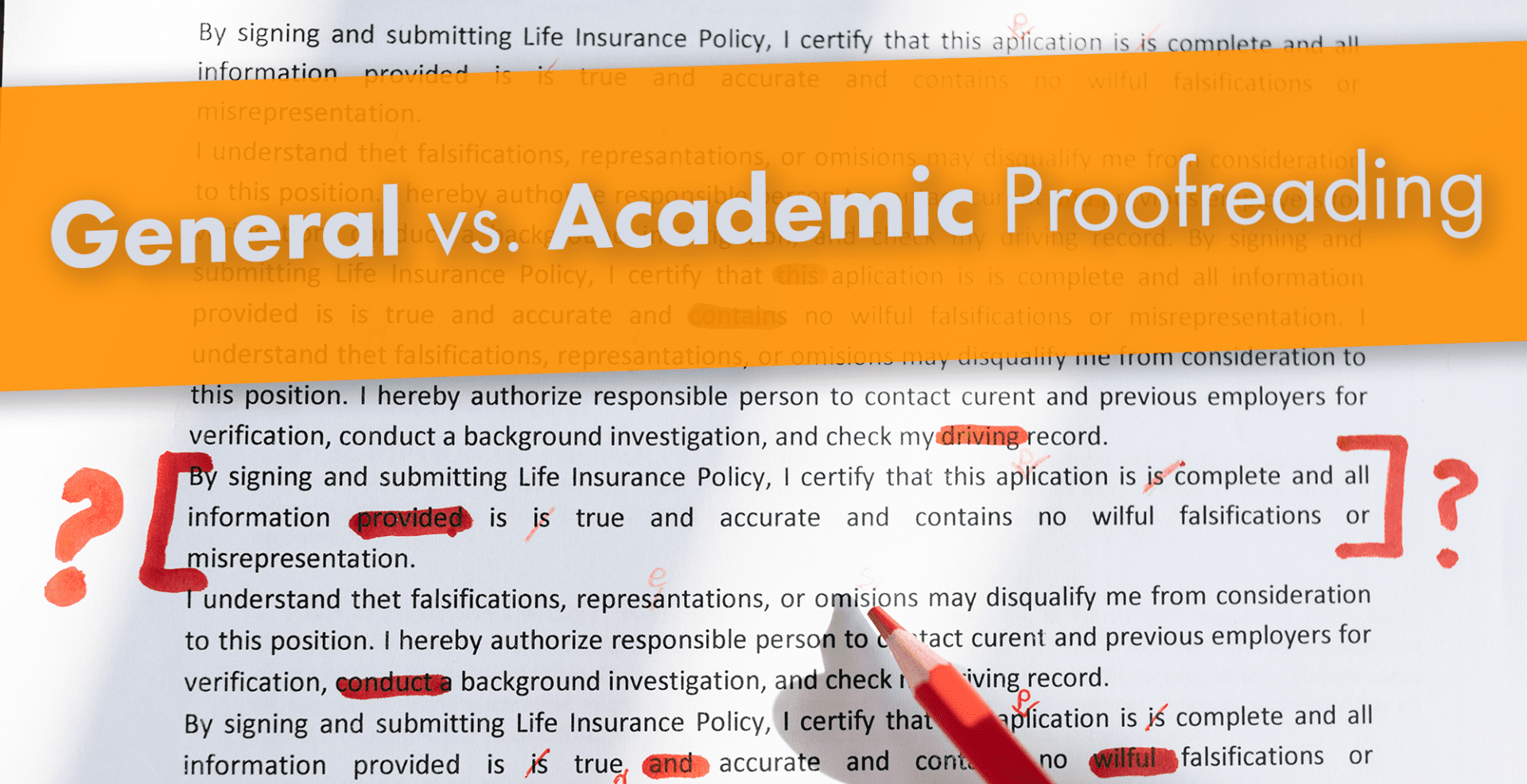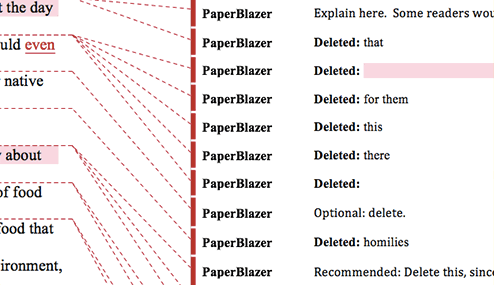Ever wonder about the difference between kinds of proofreading — especially what is different between proofreading and academic proofreading?
The answer to your question depends on who you ask and who is proofreading. I’ll provide a few examples to illustrate what I mean.
GENERAL Proofreading:
In this category, we might include friends, family, freelancers, and for-profit businesses. The goal here is to provide a polished document, perhaps using complicated markings, with little effort to “teach” the writer. The focus is not on the writer per se but on the document.
ACADEMIC Proofreading:
This category includes tutors, writing centers, non-profit organizations, and the like. The goal here is to educate, so not every mistake is marked, in order to help the student find his/her own errors. This can be helpful to some degree, but if a student has trouble understanding, not marking every error can lead to even more confusion. We might say the focus is on the writer, even more so than a perfect document.
PRO ACADEMIC Proofreading:
This kind of proofreading, such as that provided by PaperBlazer, blends these two concepts into one. The document is thoroughly marked for a polished result, but the proofreading avoids complicated jargon, explains the markings, and answers questions. In this context, “academic” means not editing content or fixing wrong answers, since the purpose is to fix and teach grammar — not to correct ideas. Here, the focus is on both the writer and the document.
Hope that helps! For the best of both worlds, get help from PaperBlazer today.
Ready to start? ORDER NOW.








